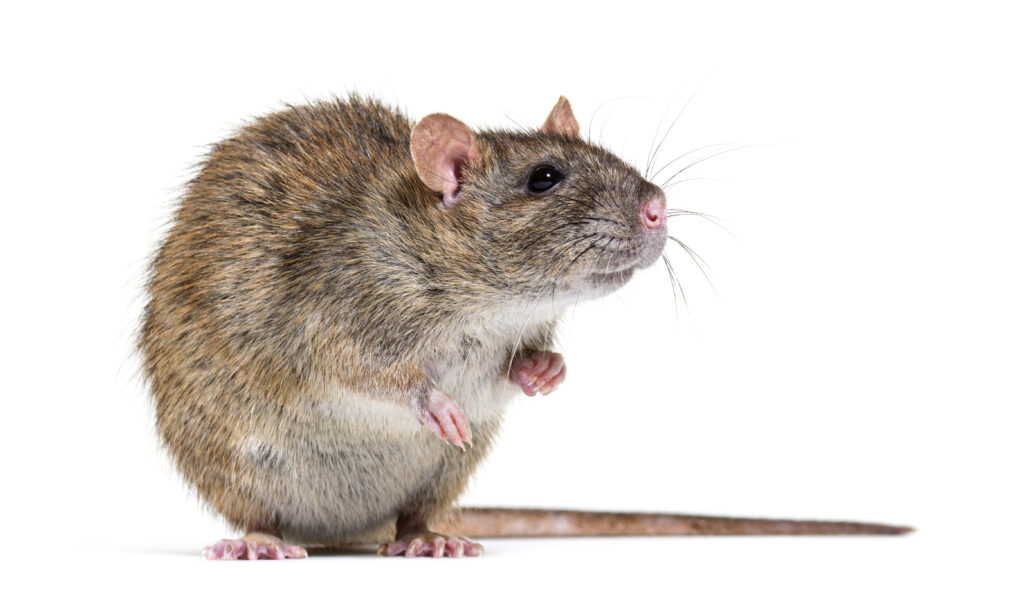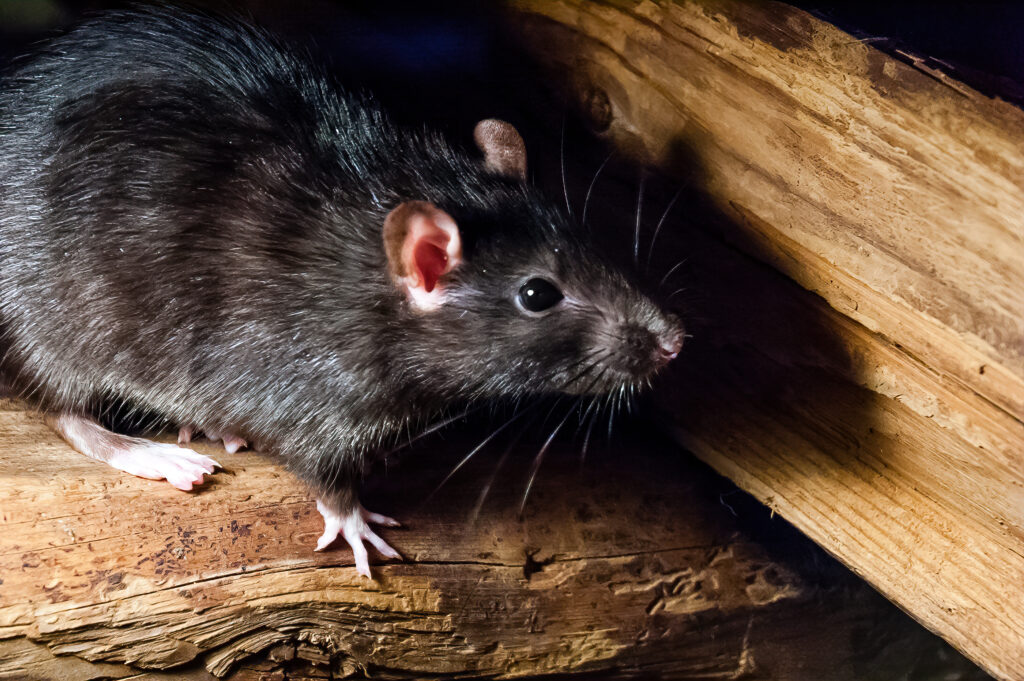Rat Control
- Home
- Rats
Rats can cause serious problems for both households and businesses.
They are known for their ability to transmit diseases, such as Weil’s disease and hantavirus, and their powerful teeth can cause significant damage by gnawing on various materials, sometimes leading to dangerous situations such as fires caused by short circuits.

Brown rat control
Rats are known to spread disease such as Weil’s disease and hantavirus.
In addition, with their strong teeth, rats are capable of gnawing through many types of materials, possibly resulting in gnawing damage and fire due to short circuits.
When rats are present near people, it is necessary to control them, preferably without the use of poison.
* Back light brown to dark gray, belly lighter.
* Slender build, pointed head, larger ears.
* Tail thin, as long or longer than the body.
* Adult is 6 to 11 cm long and weighs about 10 to 35 grams.
* Gestation period 20 to 22 days, up to 15 litters, consisting of 7 young to 10 young.
* Boys sexually mature after 3 months.
* Lifetime average 1 year, maximum 2 to 3 years.
* Culture follower, excellent digger and swimmer.
* Especially active at night is an omnivore with a preference for the best food.
( no moldy or old food).
* Occur along ditch banks, in thickets, in sewers and waste dumps, in buildings and crawl spaces.
* Soiling, gnawing damage, transmitter of diseases.
( including weil's disease and paratyphoid).
* Spread of livestock diseases, swine fever, pseudo-fowl plague, tichinosis and Aujeszky's disease.
* Make objects unattractive and/or inaccessible to the brown rat.
* Ventilation openings in exterior walls no wider than 0.5 cm.
* Approximately 15 cm wide, smooth strips on exterior walls.

Black rat control
The black rat is another common rat pest that can cause significant problems in both urban and rural areas.
Like the brown rat, they are capable of causing serious health risks and property damage.
Below you will find detailed information about the black rat, including their appearance, development, lifestyle, damage, and preventive measures.
* Back and belly blue-gray to black, other color variations also possible.
* Slender, rather pointed muzzle, large ears.
* Tail longer than the body.
* Adult: 12 to 24 cm body length, about 150 to 250 grams body weight.
* An average of 6 litters of 6 to 10 young per year.
* Offspring sexually mature after 3 months, gestation period 20 to 24 days.
* Lifetime maximum 5 years, average 2 years.
* The black rat is an excellent climber and jumper, eats anything but mainly grains.
* Lives in high, dry places in buildings and aboard ships.
* Droppings pointed in shape, 1 cm long and 0.2 cm thick.
* Tread marks, including those caused by belly mud.
* Contamination of food supplies, gnawing damage.
* Communicator of diseases such as plague and food poisoning.
* Seal all possible entrances, make sure doors close properly.
* If possible, make food inaccessible to the rats.
* Make +/- 25 cm wide, smooth strips on exterior walls.
